Индиго — джинсы, құлдар және мистика
Қою көк түстің тарихы

"жас ханзадаға арналған нұсқаулық" миниатюрасы. Джордж Шастелен кітапты Карл Батылға берудеі. 1450-1475 жылдар аралығында /Wikimedia Commons
Қоршаған ортаға зер салсаңыз, көк түстің сирек екенін аңғарамыз. Сол себепті оның адамзат мәдениетіндегі «тағдыры» ерекше. Сондай-ақ көк түстің өзгеше түрі «индиго» да әлі күнге дейін көпшілікке таңсық, дегенмен дәл сол индиго гаммасы — көк бояғыштың ең әуелгі әрі негізгі реңкі.
Индиго реңкі қою көк пен күлгін арасындағы спектрге сай келеді. Көп адамға «индиго» сөзі экзотикалық әрі түсініксіз көрінеді, яғни оларға нақты сол түсті тану қиынға соғады. Иә, тіл мен түсті қабылдау арасында тікелей байланыс бар. Мұны Жюль Дэвидофф, Жонатан Винавер сынды ғалымдар дәлелдеген. Түс психофизиологиялық ұғым болғандықтан, шағылған жарық сәулелерін қабылдау әр адамда субьектив сипатта болады. Сондықтан біздің түсті сезінуіміз салт-санамыз бен мәдениетімізге тәуелді.
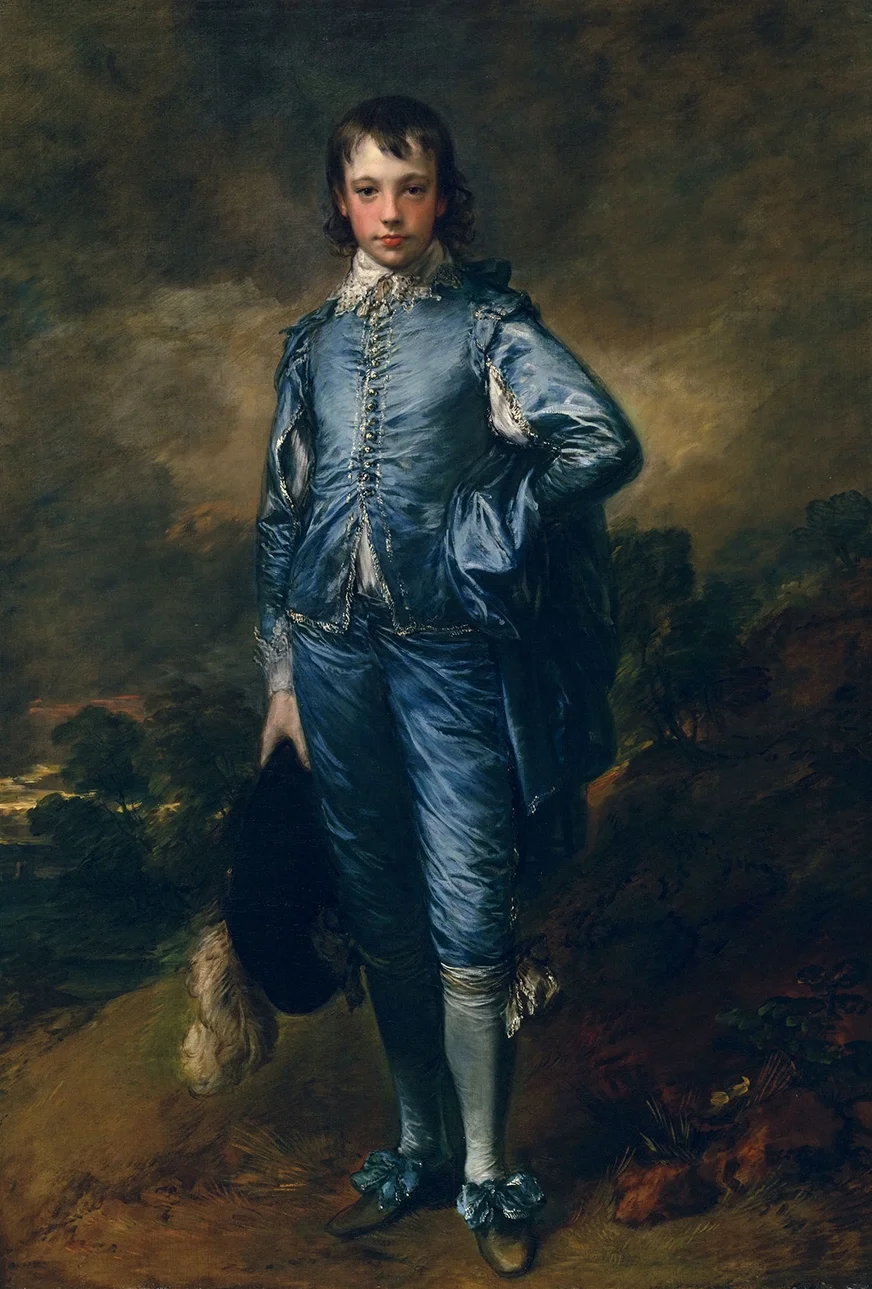
Томас Гейнсборо. Көк киімді бала. 1770/Wikimedia commons
Көк түстің өзі бар да, бейнелейтін сөзі жоқ
Осыған байланысты көк түстің барлық сұрпы ұзақ жылдар бойы сәтсіздікке ұшырады. Ежелгі гректердің өздері, филолог Лазар Гейгер айтқандай, ұзақ уақыт бойы «көк» деген сөз болған жоқ. Кейінірек бұл түсті бейнелеп айтқанда «қара» немесе «сұр» деген мағынаны білдіретін сөздер қолданыла бастады. Егер Гомер аспанды қоладай деп, ал теңізді шарапқа теңесе, бұл оның аспанды сары қылып немесе қызыл түсті толқынды көрді деген сөз емес, бұл жерде біз түс туралы емес, жарқырау мен тасып-төгілу туралы айтып отырмыз — бар болғаны гректерде көк түс тұжырымдамасының өзі болған жоқ. Классикалық латын тілінде де бұл термин кездеспейді, романдарда қолданғанда оны неміс көршілерінен алуға мәжбүр болды. Қытайлар мен жапондар, басқа да көптеген халықтар сияқты, көгілдір мен жасылдың арасындағы айырмашылықты ұзақ уақыт аңғара алмады, сондықтан олар әлі күнге дейін жапырақтың реңкін ашық көк деп атай береді.
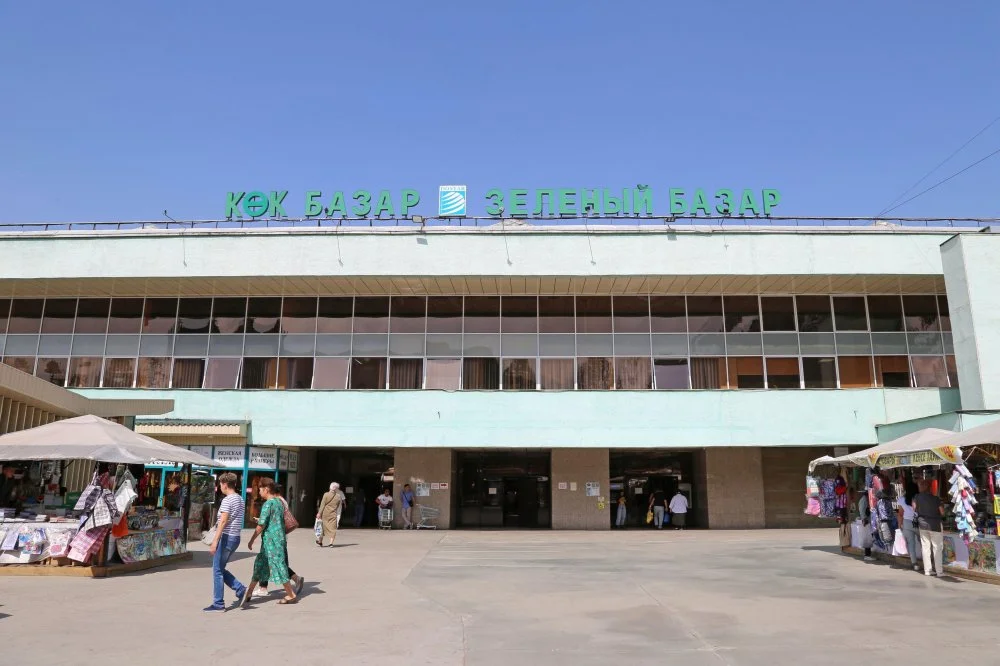
Көк базар, Алматы /Ian Bottl/Alamy
Бірақ сіз индигоның не екенін нақты білмесеңіз, гардеробыңыздағы классикалық джинсы шалбарға қараңыз. Неліктен алғашқы джинсы қызыл немесе қара емес, қою көк түсті болғанын ойланып көрдіңіз бе? Себебі индиго түстері — мақта матаға, соның ішінде денимге де жақсы сіңетін табиғи пигменттердің бірі.

1982 жылғы Levi ' s 501 джинсыдің жарнамасы - Әйелдер үшін арнайы тігілген джинсы/Alamy
Ежелгі Мысыр синтезі
Ежелгі мысырлықтар «көк» сөзін біліп қана қоймай, әлемде бірінші болып осы пигментті синтездеу әдісін меңгерді. Оның іздері бес мың жылдан астам уақытқа созылған алебастр ыдысынан табылды. Синтетикалық бояғыштардың екі ғасырлық қана тарихы бар деп ойласаңыз, оның сонау көне заманнан келе жатқанын есіңізге саламыз.
Мысырлық көк түс кварц құмының (SiO2) кальцитінен (CaCO3) және мыс минералдарынан — азурит пен малахиттен немесе мыс жаңқасынан жасалған. Компоненттер қоспасына балқу температурасын төмендететін флюс (K2CO3, NaCl немесе Na2SO4) қосып, қоспаны 800–900°C дейін қайнатып, мысырлық көк түсті шығарған.
Бұл процесте бірқалыпты температураны және үздіксіз ауа үрлеп тұру маңызды болды, өйткені оттегі жетіспеген кезде қызыл мыс оксиді куприт (Cu2O) пайда болуы мүмкін. Ежелгі Мысырда бұл технология ұрпақтан-ұрпаққа жетіп, жетіліп, қолөнершілердің бір ұрпағынан екіншісіне аманат өнер болып қалған. Алайда қазіргі адамдар бұл әдісті 20 ғасырдың аяғында ғана қайтадан қолға ала бастады.
Көк шөп. Соғыс түстері
Арменияда, Батыс және Орталық Азияда, Солтүстік Кавказда, Дағыстанда, Шығыс Сібірде, Ресейдің Еуропа бөлігінде, көптеген Еуропа елдерінде және Солтүстік Африкада бояу шытыршық (Isatis tinctoria) өседі (биіктігі бір метрге жуық, сары гүлдері бар бұта). Ағаш жапырақтары көне заманнан жүнді көк және жасыл түске бояуға, әсіресе кілем өндірісінде қолданылған. В. И. Даль сөздігінде.i

Isatis tinctoria L. "гүлденген Солтүстік флора" Стокгольм Карл Аксель Магнус Линдман (1856-1928)/Wikimedia Commons
Айтпақшы, бұл өсімдік Қазақстанда да, Қытайдың ең жақын Шыңжаң өлкесінде де өседі, сондықтан сіздің арғы әжеңіздің көйлегі немесе арғы атаңыздың шапаны осы шытыршықпен боялған жіптен тігілген болуы әбден мүмкін.
Бұл бұтаның тұқымы жел арқылы жеңіл тасымалданады. Бояу шытыршық өте жемісті арамшөп (ағылшынша weed, яғни «арамшөп»). Мысалы, Американың Юта штатына бұл бұтаны мата бояумен айналысқан мормондар әкелген, олар әлі күнге дейін осы арамшөппен күресе алмай келеді.
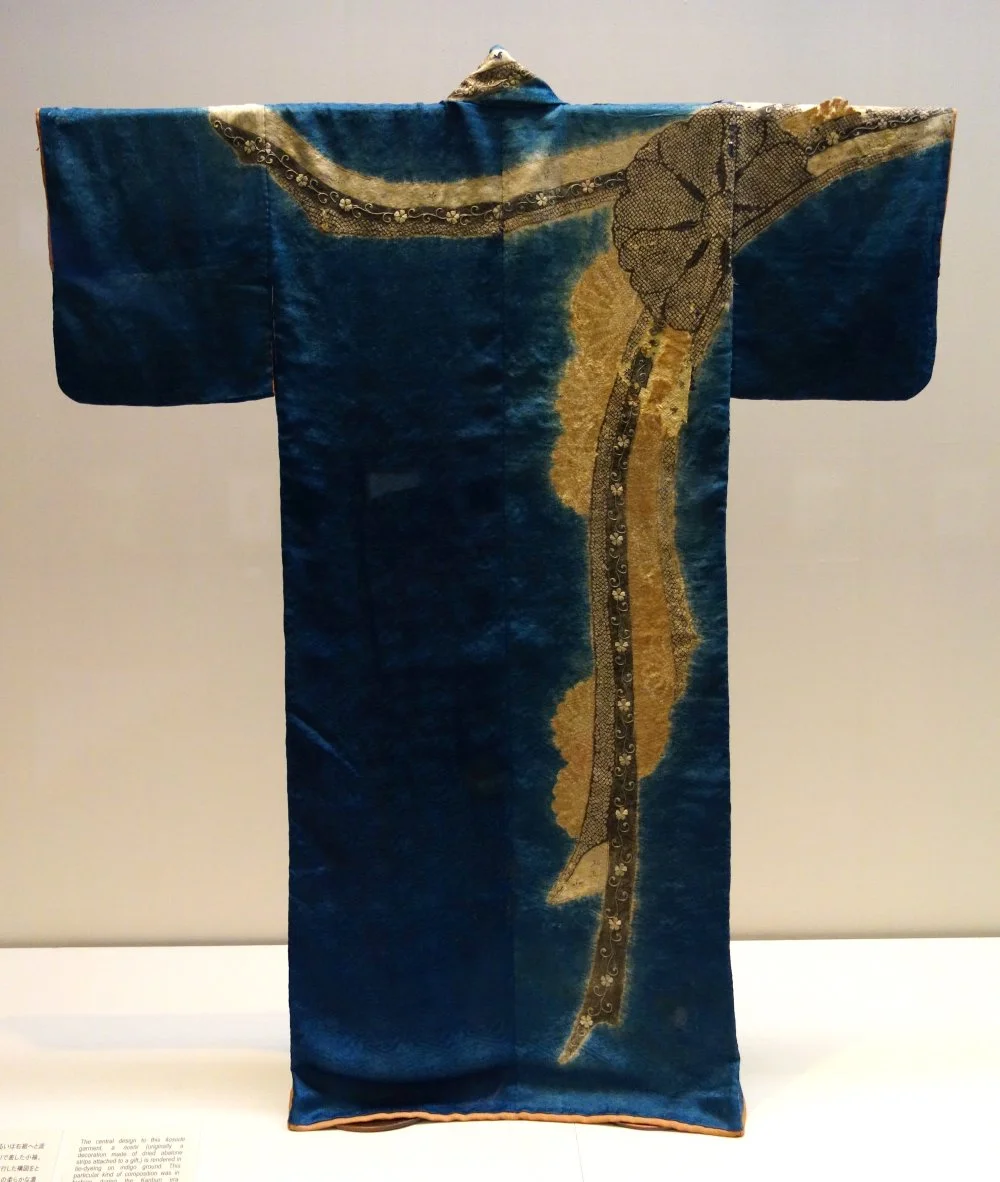
Жапон киімі "косоде". Атласты мата индигомен боялған. 17 ғасыр/Wikimedia commons
Бірақ байырғы британдықтар Ұлыбританияда бояу шытыршықтың таралуына мүлде қарсы болған жоқ, қайта оның пигменті арқылы киімдерін ғана емес, сонымен қатар өз денелерін де бояй бастады. Ағылшын тіліндегі оқулықтарда Британ патшайымы Боудикка (б.з. 60–61 ж.ж.) әскерін көк көйлекпен шабуылға бастаса, ұлы жауынгер король Каратак (б.з. 25–54 ж.ж.) әр шайқастың алдында басынан аяғына дейін осы бояу шытыршықпен боянып-сыланып алғандығы жазылған. Гай Юлий Цезарьi



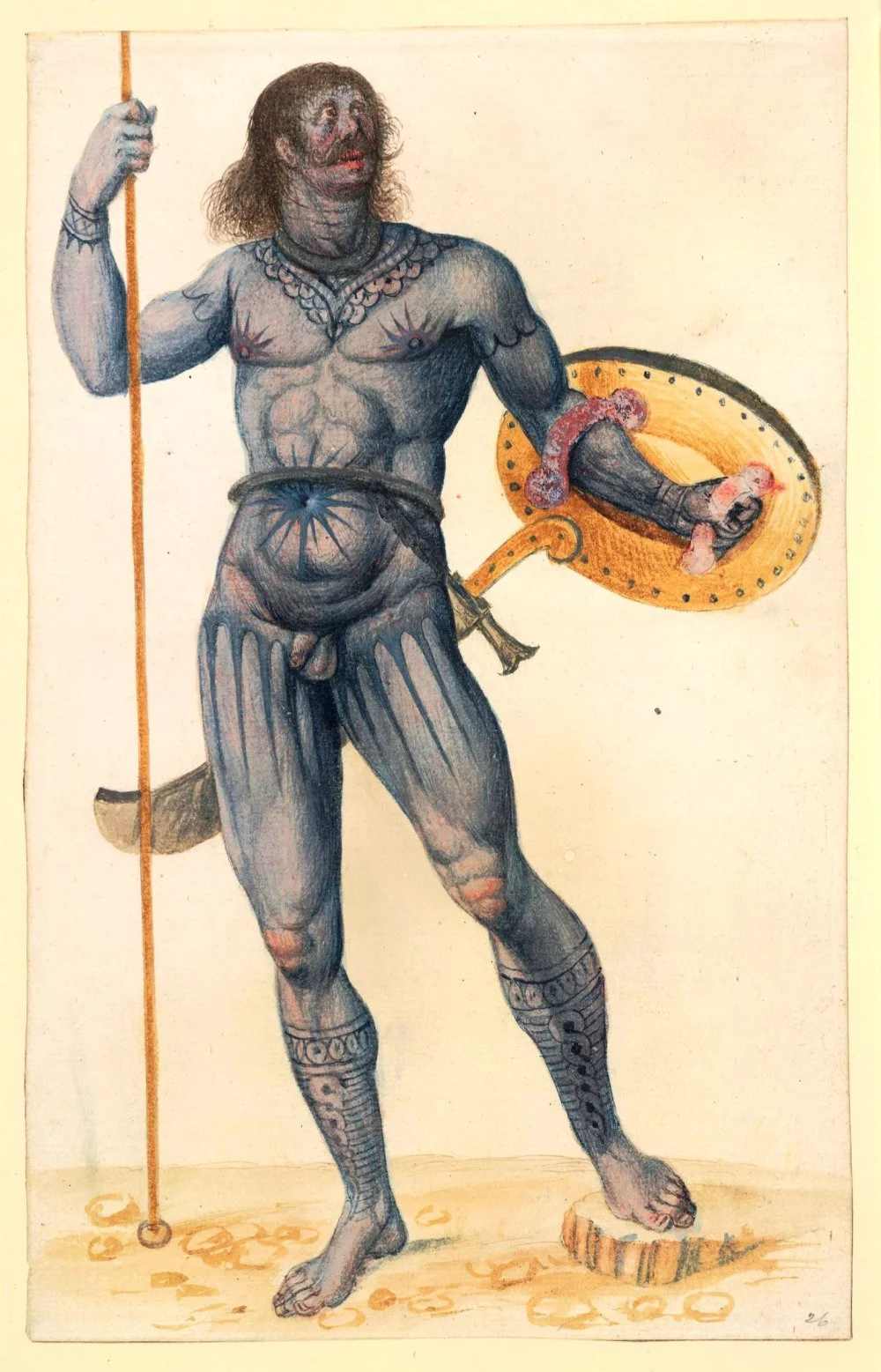
Денесі көккеі боялған жалаңаш Пикт жауынгері/The Trustees of the British Museum
Ағаштан бояғыш алу әдісі өте қарапайым. Ол үшін жаңа кесілген өсімдікті су толы шұңқырларға 12–24 сағат бойы қадап қояды. Ашыту кезінде көмірқышқыл газы бөлініп, бояғыш тасымалдаушы ерітіндіге түсіп, оны сары түске айналдырады. Алынған ерітінді құмыраға құйып алып, үздіксіз араластырады, ол ауа оттегімен жанасады да, нәтижесінде тұнба бетіне көк үлпек түрінде индиго қалқып шыға келеді. Алынған массаны жуып, сығып, оны қалыпқа келтіреді. Рас, шытыршық құрамындағы индиготин тек 10–15%-ды құрайды.
Индиго — «үнділік» деген сөз
Индиго пигментінің 90%-ы индигофера бояуында (Indigofera tinctoria) кездеседі, Үндістанда өсетін бұта, әртүрлі тропикалық және субтропикалық аймақтарда кеңінен өсіріледі. Британдық журналист, жазушы және әлеуметтік антрополог Виктория Финли «Бояулардың құпия тарихы» еңбегінде: «Индиго Инд алқабында бес мың жылдан астам уақыт бұрын өсіріле бастады, ал сол жердің диалектісінде өсімдік «ніл» деп аталған, ал бұл «қою көк» деген мағынаға саяды. Осы жерден бастау алған мәдениет барлық бағытта таралды. Британ мұражайында біздің дәуірімізге дейінгі 7 ғасырға жататын вавилондық бояу рецептерінің тақтайшасы бар, яғни Месопотамияда индиго екі жарым мың жылдан астам уақыт бұрын белгілі болған», – деп жазды.

Пергам мұражайы, Иштар қақпасы/Wikimedia commons
Үндістан грек-рим дәуірінде индигоның Еуропаға негізгі жеткізушісі болды. Үндістанның индигомен байланысы гректің «бояғыш» деген сөзінен байқалады: indikón (ννδικόν). Индигоны сурет салу үшін пигмент ретінде, сондай-ақ емдік және косметикалық мақсатта қолданған римдіктер бұл терминді indicum деп латыншалап алды, ол Венеция диалектісіне және көптеген заманауи тілдерге indigo болып көшті.
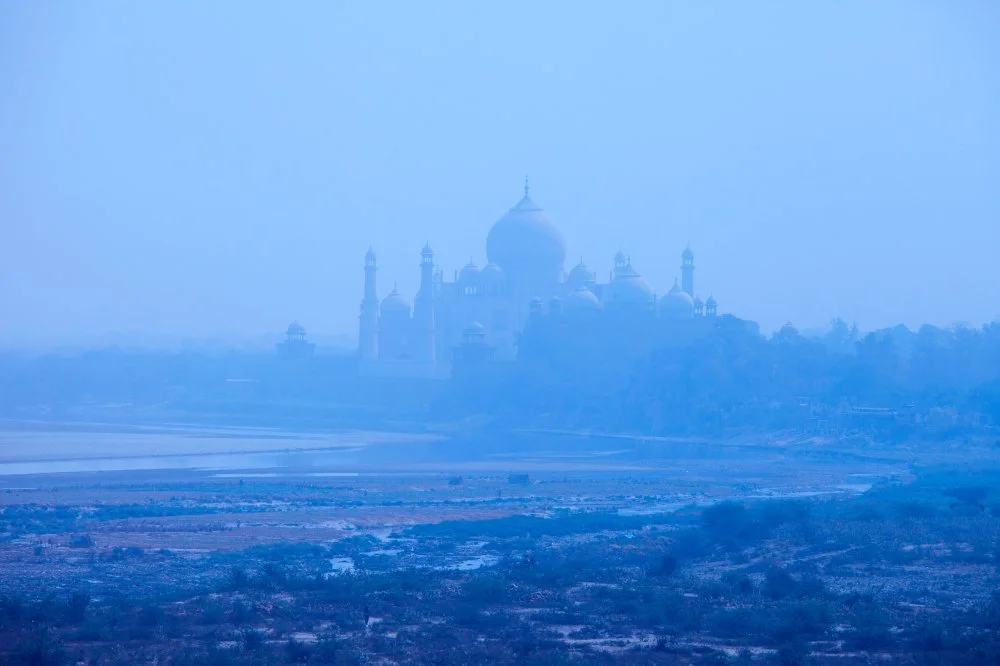
Тәж-Махал, Агра, Үндістан, Jim Zuckerman/Alamy
Тарихшы Мишель Пастуро римдіктер және олардан бұрын гректер «бұл өсімдіктің тектілігін білмеген» дейді. Мәселе мынада, индиго жапырақтары ұсақталып, қамыр тәрізді массаға айналдырылып, кептірілген, содан кейін шағын шақпақ (брикет) түрінде экспортталып, сатылды. Ал Еуропадағы тұтынушылар оларды пайдалы қазба деп бағалаған. Диоскоридтенi
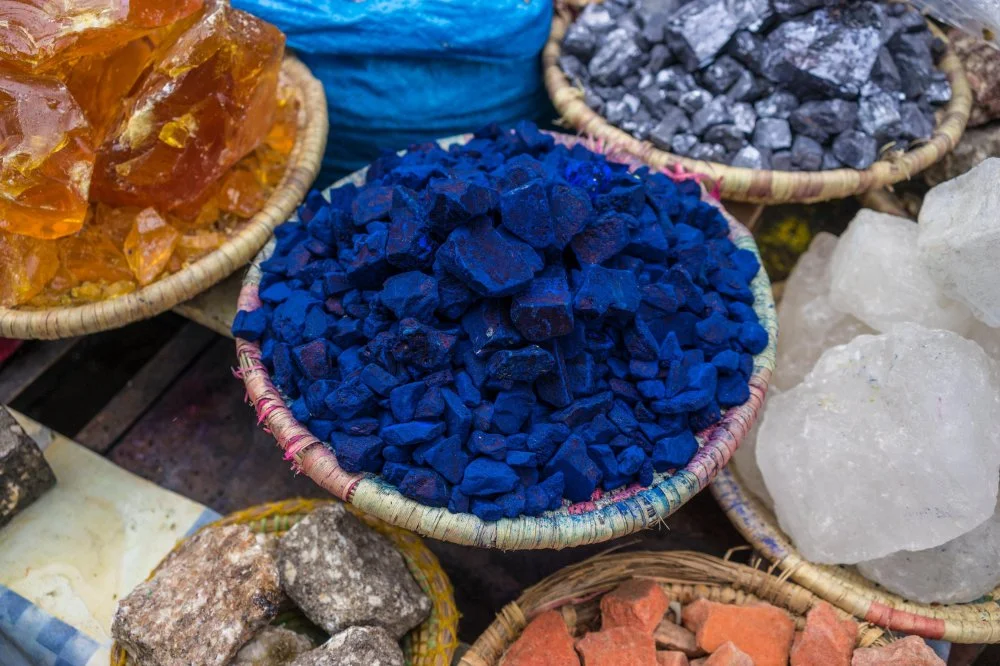
Индиго, түрлі-түсті пигмент, базарда, Марракеш, Марокко/Alamy
Шытыршық пен индиго — сәтсіз соғыс
Орта ғасырларда индигоны Еуропаға Үндістаннан араб саудагерлері тасып жүрді және бұл бояу 15 ғасырдың аяғына дейін португалдық Васко да Гама есімді теңізші Үндістанға теңіз жолын ашқанға дейін сән-салтанат нышаны болып қала берді. Теңіз тасымалы құрлыққа қарағанда қысқа және қауіпсіз жол болды, сондай-ақ сауда керуендері кесіп өтетін елдердің шегарасында қомақты баж салығын төлемейтін еді. Тропикалық индиго Еуропаға соншалықты ағынмен келіп, сапасы төмен бояғыш шытыршықтарды нарықтан ығыстырды, сондықтан Франция мен Германия жергілікті өнеркәсіптерді сақтап қалу үшін 16 ғасырда оның импортына тыйым салуға мәжбүр болды. Англияда индигоға да ресми түрде тыйым салынды, өйткені шытыршық өсімдігін сатушылардың мүддесін қорғайтындар мүлдем зиянсыз индигоны улы деп тапты. Бірақ 1630 жылдардан бастап 1660 жылға дейін ресми түрде күшіне енген бұл тыйым ашық түрде ескерілмеді, өйткені Шығыс Үндістан компаниясының мүшелеріi
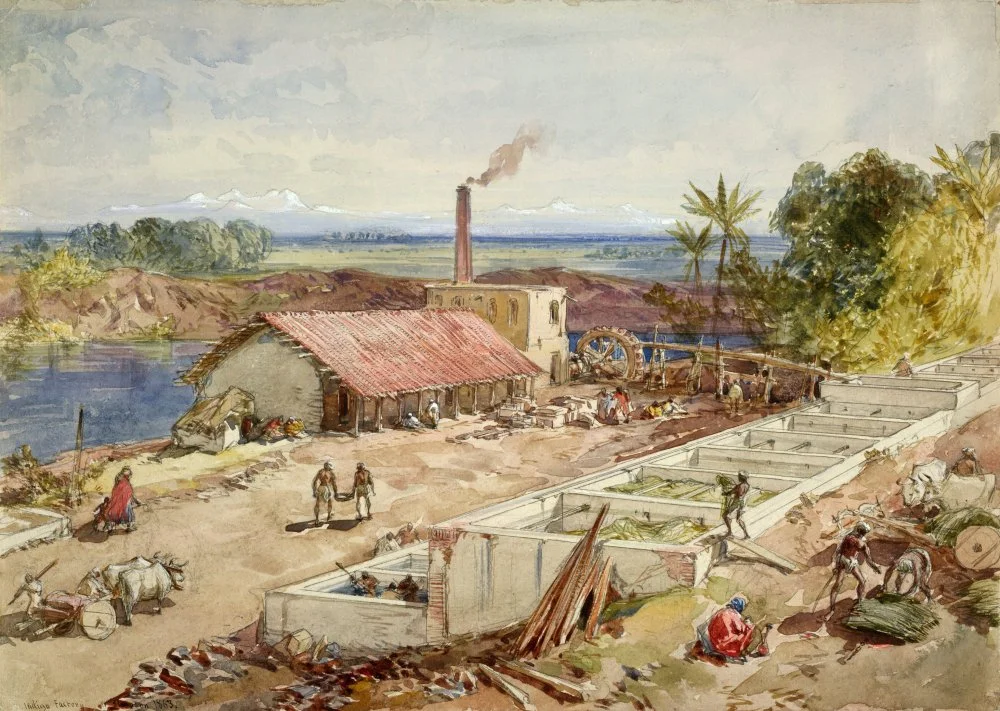
Шотланд суретшісі Уильям Симпсон (1823-1899). Бенгалиядағы индиго бояу зауыты (қазіргі Батыс Бенгалия және Бангладеш). 1863/Alamy
Көк түс үшін тер төккен құлдар
Бояғыш шытыршықтың индигоны жеңе алмайтыны белгілі болған соң, Испания сынды көптеген еуропалық державалар өздерінің тропикалық колонияларында индиго плантацияларын сала бастады. «Француздар бұл өсімдікті Доминика, Мартиника және Гваделупа аралдарында өсіруді қолға алды. Климат мейлінше қолайлы болды. Сонымен қатар индиго өсіру процесі ауыр физикалық еңбекті қажет етеді. Мұнда тек еуропалықтар ғана емес, француздарға құлдар қызмет қылды. Йоруба құлдары өздерінің отаны Батыс Африка жерінде, арабтар оларды индигомен таныстырғаннан кейін мың жылға жуық уақыт бойы дәл осылай істеді және Африкада да құл еңбегі пайдаға асты. Күні бүгінге дейін Нигерия көк тоқыма бұйымдарымен танымал», – деп жазды Виктория Финли.
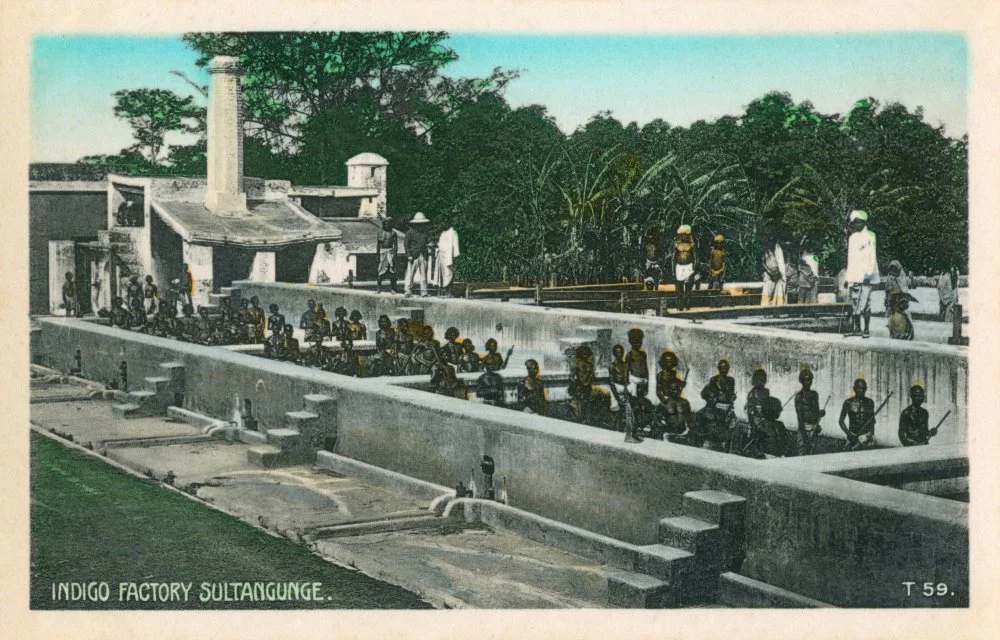
Индиго фабрикасы, Сұлтанганж, Бихар, Үндістан/Alamy
Қазіргі Сальвадор аймағындағы қарқынды индиго өндірісі құл иеленушілік сипатта жүргізілді, сол жерде жұмыс істеуге мәжбүр болған жергілікті байырғы тұрғындардың бірнеше буыны қанаудың кесірінен жойылып кетті. Бағалы бояу Гаитиде, Ямайкада, Виргин аралдарында, орталық және Оңтүстік Америкада да шығарылды. Ал 18 ғасырдың ортасында Американың Оңтүстік Каролина штатында индиго өсіру мен өндіруді Антигуадан жіберілген тұқымдарды қолданып, көршілес отырғызушыларға жомарттықпен таратқан тұқым өсірушінің қызы мен әйелі Элиза Лукас Пинкни дамытты. Әрине, олардың плантацияларында құлдар да жұмыс істеді. 1750 жылға қарай Англия Каролинадан 30 000 тонна индиго сатып алса, ал 1755 жылға қарай бұл көрсеткіш 500 000 тоннаға жетті.

Уильям III патшалығының билігі мен Анна Патшайымның билігінің басында киілген көйлек түрлері 1689~1707 жж. «І Вильгельм заманынан Виктория патшайымның билігіне дейінгі Британдық ханымдардың костюмдері» кітабынан, қолмен боялған литография. 1840/Alamy
Индигоның мистикалық сипаты
Элиза Лукас орталық және Оңтүстік Америкада жергілікті климатқа әлдеқайда төзімді жартылай бұта индигоферасы (Indigofera suffruticosa) өсетіндігінен хабардар емес-ті, ал оны Мезоамерика халықтары ежелгі дәуірден бері қолданып келеді. Майялар индиго мен сол жердің сазын араластыра отырып, фрескалары үшін көгілдір түсті жасады. Бұл өте әдемі көгілдір реңк болып шықты және 1960 жылдарға дейін майялар металл негізіндегі бояғыш жасады деп есептелді. Ал ацтектер индигоны медицинада қолданып, құрбандыққа шалынатын малға көк бояу жағып қоятын болған.
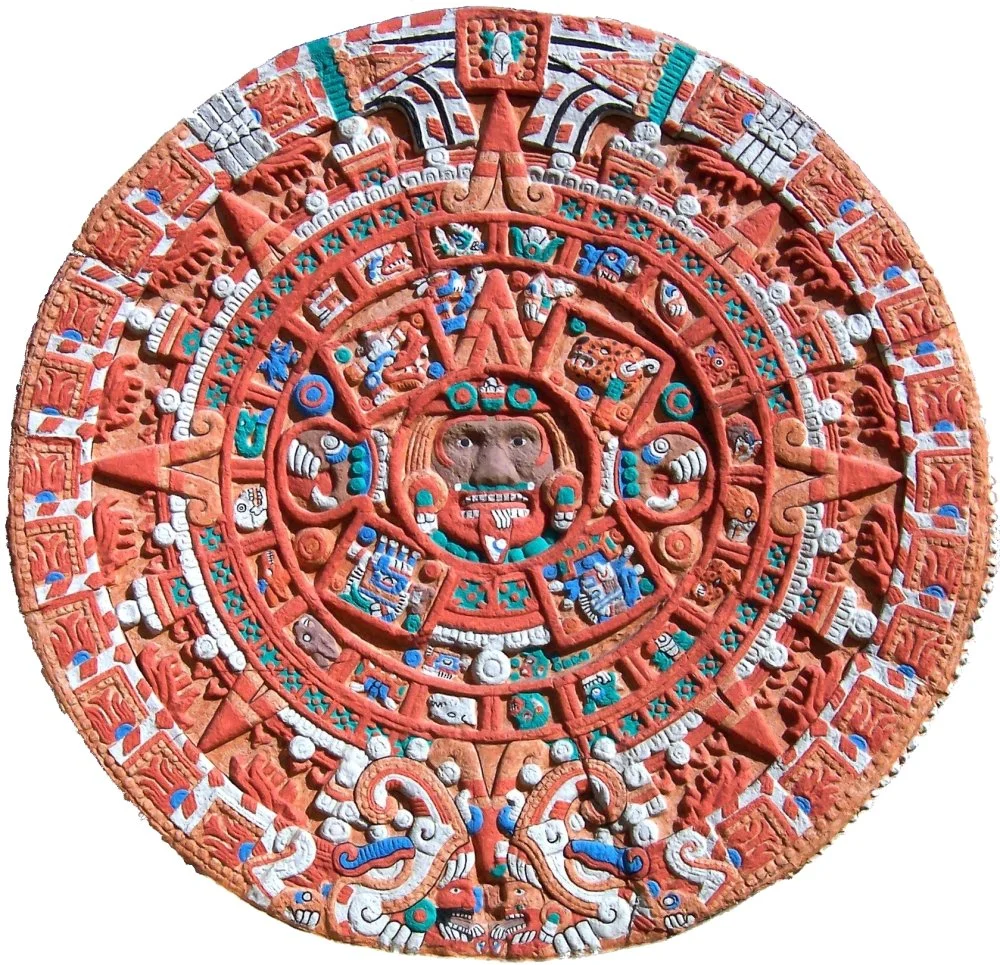
Ацтектердің күн тасының көшірмесі/Wikimedia Commons
Виктория Финли көптеген мәдениеттерде индиго мистикалық түс болып саналғанын, сол түстің әсерінен тылсым сезімдер туындап және әлденені өзгерте алатын қасиеті барын жазды. «Мысалы, Ява аралында индигоға ерлі-зайыптылардың жанжалы «жақпайды» деп сенген, Бутанда құрсағындағы нәресте көк түсті ұрлап кетпеуі үшін жүкті әйелге бояу құйылған жуынатын қазанға жақындауға тыйым салынған. ...Марокко тауларындағы әйелдер сан түрлі ертегі айтып, бүлінген бояудың «көңілін аулап, тыныштандыруға» тырысқан.
Баршаға арналған индиго
19 ғасырда табиғи үнді индигосын экспорттаушы Ұлыбританияға тәуелділікті жеңу үшін көптеген өндірушілер химиктерге осы бояуды синтездеуге тапсырыс берді. Естеріңізге сала кетейік, оны алудың Ежелгі Мысырлық құпиясы сол уақытқа дейін ұзаққа жоғалып кеткен. Бірақ ғалымдар ұсынған жүздеген әдістің бағасы қымбат, оның үстіне, өнеркәсіптік өндіріске жарамсыз болып шықты. Сол ғасырдың аяқ шенінде швейцариялық Карл Хейман индигоны анилиннің қолжетімді туындысынан, яғни анилин бояғыштарын синтездеу үшін кеңінен қолданылған антранил қышқылынан және ацетальдегид туындысы сірке қышқылынан оңай алынатын хлорацет қышқылынан синтездей білді. Содан кейін индигоны басқа бояулармен қамтамасыз ететін өнеркәсіп өз жұмысын бастады. Сондықтан бірінші дүниежүзілік соғыстың басында синтетикалық индиго табиғи нарықтан толықтай ығыстырылды.
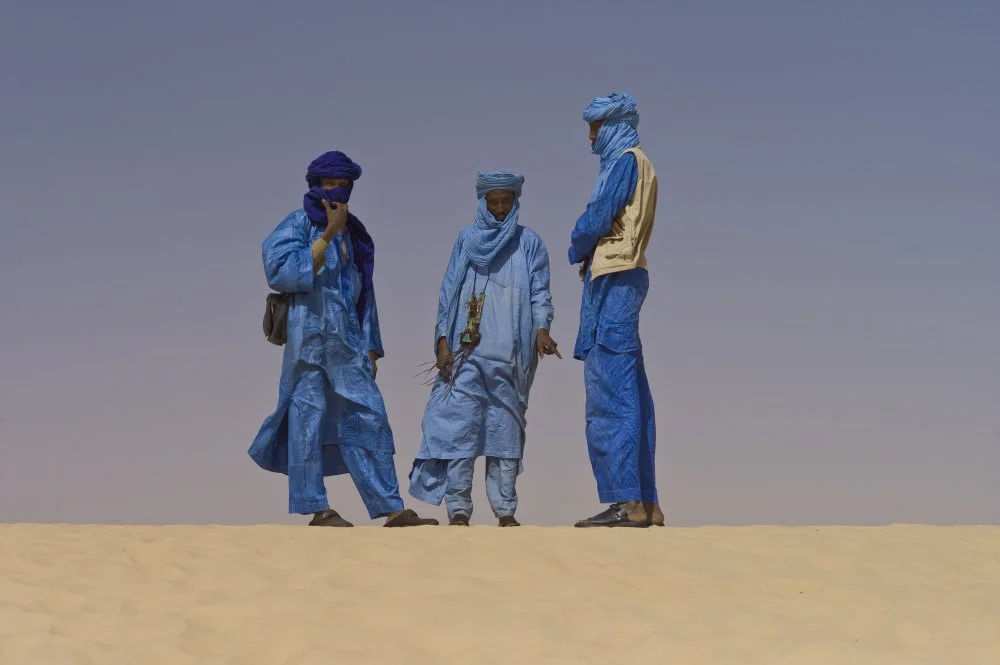
Индиго түсті киімдегі туарегтер. 2012/Alfred Weidinger/Wikimedia commons
НЕ ОҚУҒА БОЛАДЫ?
Мишель Пастуро. Синий. История цвета.— М., 2017.
Виктория Финли. Тайная история красок. — М. 2010.
Бальфур-Пол Дженни. Индиго: от египетских мумий до синих джинсов. — Лондон: Издательство Британского музея, 2016.
Записки Юлия Цезаря и его продолжателей о Галльской войне, о Гражданской войне, об Александрийской войне, об Африканской войне.— М., Научно-издательский центр «Ладомир» – «Наука», 1993. Репринтное воспроизведение текста издания 1948 года.




